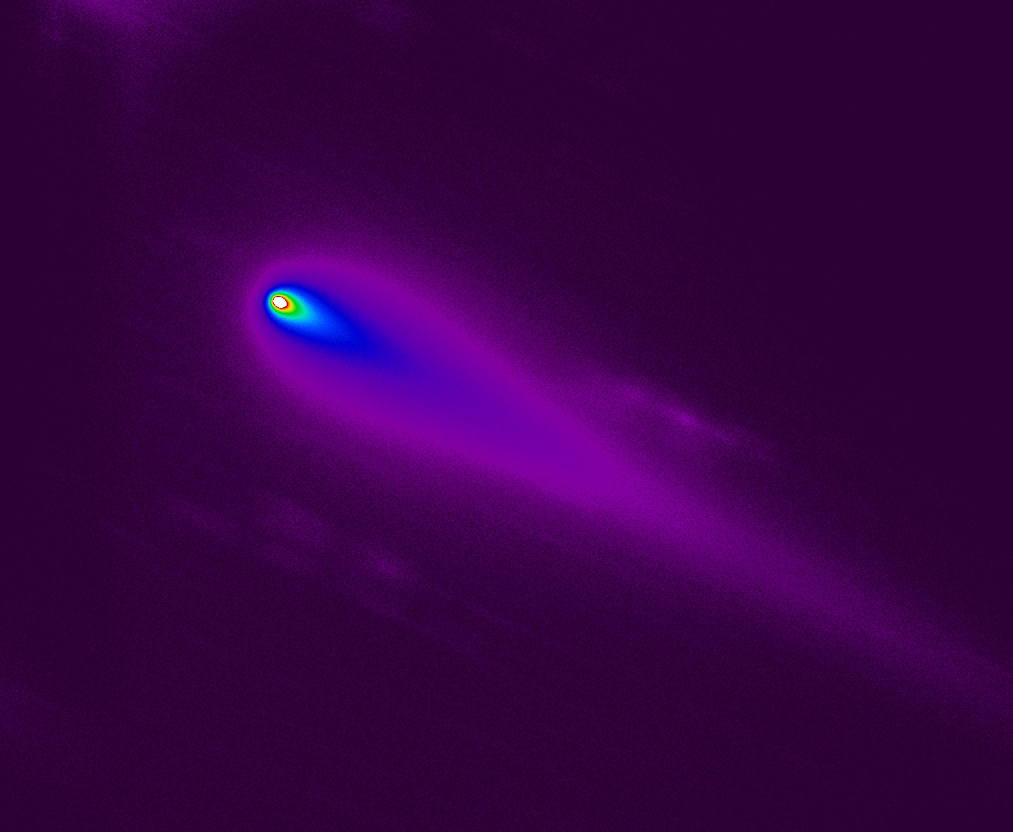ISON comet undergoes activity burst and it is visible with naked eye
ISON will brush past the sun on 28 November next and will provide an outstanding opportunity to study the evolution of a new comet, recently arrived from the boundaries of the solar system
ISON will brush past the sun on 28 November next and will provide an outstanding opportunity to study the evolution of a new comet, recently arrived from the boundaries of the solar system
Comet ISON has surprised astronomers with a recent burst of activity which has considerably increased its gas emissions and brightness, to the point of making it visible to the naked eye. Researchers at the Institute of Astrophysics of Andalusia are participating in various observation campaigns designed to study the comet before and after its passage through the perihelion, the moment when it is nearest to the sun, and to analyze its activity and characteristics in detail.
Comets—small, solid, frozen bodies—undergo dramatic changes as they approach the sun. The ice warms up and evaporates (sublimes), releasing grains of dust that drag behind them, reflecting solar light and giving rise to a coma (a central, diffuse stain that surrounds the nucleus) and a tail. More violent episodes of activity can also occur, during which the brightness of the comet suddenly becomes more intense, as just happened with ISON.

MONITORING OF ISON
The Institute of Astrophysics of Andalusia holds a distinguished position at the international level in the field of cometary science, reflected in its participation in the Rosetta (ESA) mission which will soon reach comet 67 P/Churyumov- Gerasimenko. Scientists from that Institute take part in numerous observation campaigns to collect a maximum amount of data concerning ISON’s approach to the sun from various observatories (Calar Alto Observatory, Sierra Nevada Observatory, Roque de los Muchachos Observatory in La Palma, IRAM radio telescope in Pico Veleta...)
An overall and practically simultaneous spectrum of ISON’s coma will be obtained from different points. This will make it possible to determine what molecules are present inside the coma or ‘atmosphere’ of the comet and in what quantities. A compound derived from phosphorus--hitherto never found in comets and essential to life--will be on the search list, as well as organic ice or grains of dust. The comet’s rate of production of gas will be determined along with the properties of dust particles; variations in the comet’s position relative to the sun and the rotation index of the nucleus will also be monitored.
COMET ISON
C/2012 S1 (ISON) was discovered on September 21st, 2012 by Russian astronomers using a telescope of the International Scientific Optic Network; the acronym in English gave the comet its name. Although initial reports seemed to indicate that ISON would be brighter than the full moon, which led it to be considered the ‘comet of the century’, we now know those estimates were too optimistic. The evolution of a comet depends on so many different factors (size of nucleus, composition, orbit, density, rotation, number of times it has been near the sun, etc…) that it is practically impossible to foretell how strongly it will shine.
ISON has peculiarities which make it an interesting specimen. According to estimates of its orbit it comes from the Oort cloud, so it provides an opportunity to study a new comet, recently arrived from the boundaries of the Solar System. Possibly it will provide some physical and chemical clues to understand the formation, history and evolution of the Solar System.
Another outstanding feature of ISON is that it will brush closely past the sun on 28 November. During its perihelion, or nearest point on its orbit to our star, the comet will be only 2,7 solar radii (1,8 million kilometers) from the sun and will reach temperatures up to five thousand degrees. This affords exciting possibilities: due to the heat, ISON may undergo an intense period of activity with sublimation not only of ice but also of silicates and even metals, which would release great amounts of dust and would increase brightness considerably. But it may also happen that, due to tidal forces or the heat of the sun, ISON’s nucleus fragments or vaporizes, as has occurred with more than two thousand previous sungrazer comets.
IMAGE GALLERY
http://ison.iaa.es/galeria_ison
MULTIMEDIA GALLERY (Spanish):
ISON, ¿el cometa del siglo?
http://ison.iaa.es/node/46#.UoTBweJF_To
En busca de fósforo
http://ison.iaa.es/node/47#.UoTCI-JF_To
Estudio de la cola de iones y el núcleo de ISON
MONOGRAPH ABOUT ISON: http://ison.iaa.es/
